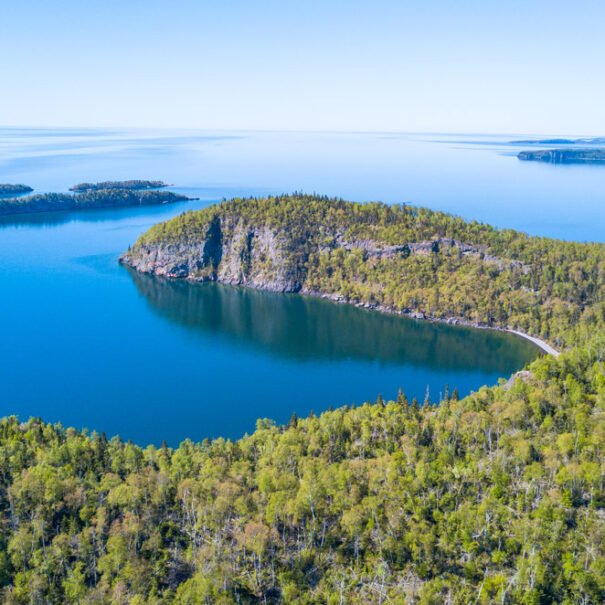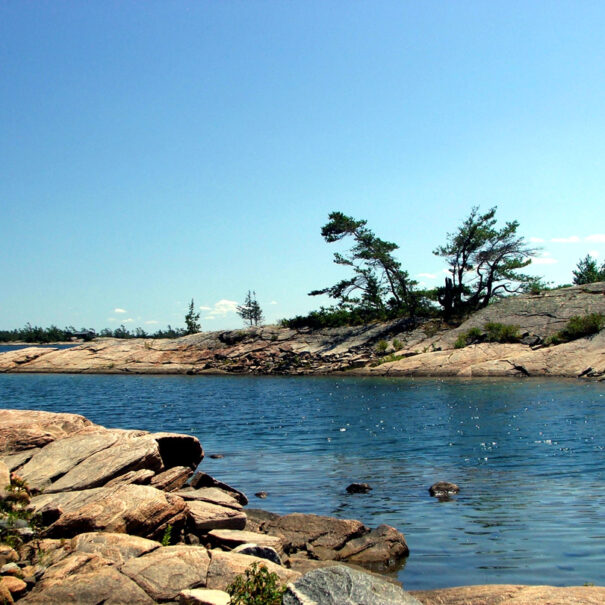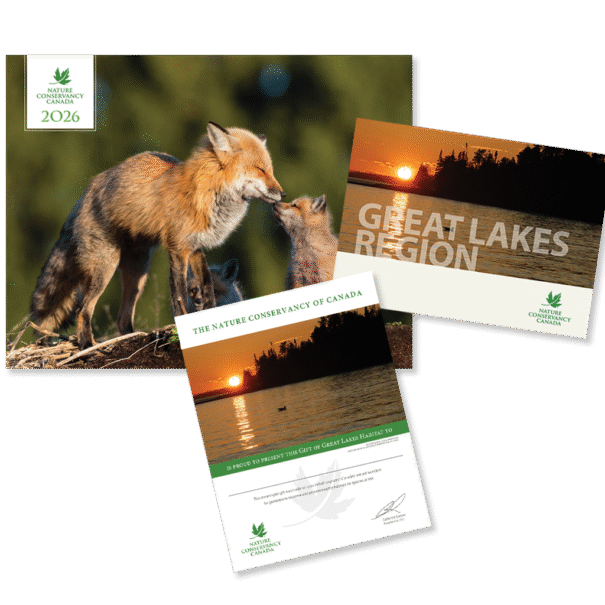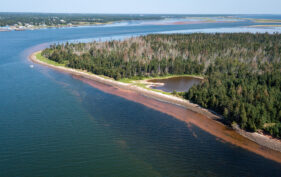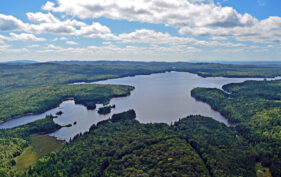Great Lakes Region
In the northern part of the Great Lakes region, the Nature Conservancy of Canada (NCC) is protecting some of the last Great Lakes coastal wilderness in places such as Lake Superior, Cockburn Island and the Bruce Peninsula. In southern Ontario, NCC is leading some of the region’s largest land protection and restoration projects, including on Pelee Island and north of Long Point.
Gift details
Digital download includes:
- Digital species booklet
- Digital full-colour certificate
- Informational video
Physical package includes:
- 2026 NCC calendar
- Species booklet
- Full-colour certificate
Need to ship to multiple addresses? Visit the FAQ page for more information.
Your Gift in Action
Your gift will conserve critical habitats and ensure a future for species at risk. It will also build healthier, more resilient ecosystems that provide essential benefits and services to people and their communities, while countering the effects of climate change and biodiversity loss.
Since 1962, NCC has brought Canadians together to conserve and restore more than 15 million hectares, coast to coast to coast. But we must do more faster and accelerate the pace of conservation. Every gift and donation counts.
Great Lakes Region
The Great Lakes are the largest freshwater ecosystem in the world. Their waters and coasts host many species that are found nowhere else in the world. And their unique coastal habitats include freshwater dunes and beaches, alvars and lakeplain prairies.
Ontario’s Great Lakes Basin is the world’s largest freshwater resource, representing close to 20 per cent of the world’s surface fresh water, providing drinking water for more than 40 million people. The amount water in Lake Superior could cover all of North and South America with 30 centimetres of water. With more than 32,000 islands, the Great Lakes feature the world’s largest collection of freshwater islands. The region boasts stunning biodiversity, from eastern prickly pear cactus on Pelee Island to woodland caribou on Superior’s North Shore.
But the southern Great Lakes region has been heavily modified by urban development, agricultural land use and is home to more than one-third of Canada’s population. In southwestern Ontario, only 2.5 per cent of the landscape is protected. Many of the remaining natural habitats in the south are small and highly fragmented and are being impacted by invasive species.
The Canadian Shield of the Great Lakes region is still home to large tracts of undeveloped wilderness. By symbolically adopting the Great Lakes habitat, you are ensuring that they will be protected forever.
Photo 1: Big Trout Bay, Lake Superior, ON; photo by Costal Productions. Photo 2: Wilson Island, ON. Photo 3: Eastern Georgian Bay Coast, ON; Photo by NCC. Photo 4: Trout Bay Lake Superior; Photo by Costal Productions

